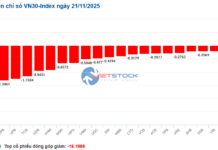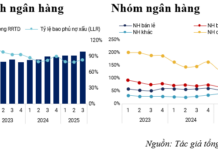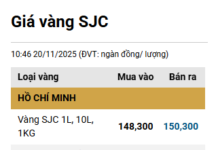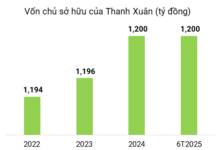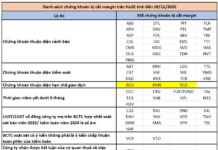Workers Benefit, Minimal Cost Increase for Businesses
According to the proposal, the regional minimum wage from January 1, 2026, is expected to increase as follows: Region I from VND 4.96 million to VND 5.31 million; Region II from VND 4.41 million to VND 4.73 million; Region III from VND 3.86 million to VND 4.14 million; and Region IV from VND 3.45 million to VND 3.7 million. This represents an increase of VND 250,000–350,000 per month.
The Ministry of Home Affairs’ impact assessment indicates that with a 7.2% adjustment, the regional minimum wage will be approximately 0.6% higher than the projected minimum living standards for 2026. This means workers will benefit immediately, as the increase accounts for anticipated CPI inflation.
Raising the minimum wage not only boosts income but also ensures social welfare, enabling workers to better afford essential needs amid rising prices. This encourages workers to remain in the job market and participate in social and health insurance programs.
The projected 7.2% increase in regional minimum wages is expected to raise average production costs by only 0.5–0.6%. Labor-intensive sectors like textiles and footwear may see higher increases, around 1.1–1.2%. However, these levels are considered manageable and unlikely to disrupt business operations significantly.
 A 7.2% minimum wage increase benefits workers with higher earnings, while production costs for businesses rise only slightly. Illustration: Nam Khánh |
Most businesses already pay wages above the minimum, so the primary impact will be on low-wage workers, whose salaries must meet the new threshold. Additional costs will mainly stem from mandatory insurance contributions tied to wages.
The Ministry of Home Affairs emphasizes that this approach improves workers’ livelihoods while helping businesses maintain stability and recover from challenges. The policy is viewed as a balanced compromise, ensuring neither party bears excessive pressure.
Increase Without Disruption
In addition to monthly wages, the hourly minimum wage will also be adjusted. The Ministry proposes the following rates from 2026: Region I at VND 25,500, Region II at VND 22,700, Region III at VND 20,000, and Region IV at VND 17,800.
Current hourly rates are: Region I at VND 23,800, Region II at VND 21,200, Region III at VND 18,600, and Region IV at VND 16,600.
These rates serve as the minimum for part-time or flexible work arrangements, similar to wages for casual labor in restaurants or cafes. Since businesses often pay at or above these rates, implementation is unlikely to increase costs.
For workers, especially part-time employees, adjusting the hourly minimum wage enhances legal protections and ensures recognized rights. Converting monthly to hourly wages also prevents businesses from circumventing policies, maintaining stable labor relations.
Balancing Interests, Enhancing Workforce Quality
The minimum wage adjustment has significant social implications. Higher wages motivate workers to stay with their employers and reduce wage-related disputes, a common cause of labor conflicts.
Experts note that wage increases foster harmonious and stable labor relations, crucial for social order and sustainable labor market development.
A labor and wage expert highlights that this adjustment balances worker and business interests, encouraging restructuring and productivity improvements through technology investment.
“Long-term, minimum wage policies enhance workforce quality, making Vietnam’s labor market more competitive regionally. Improved livelihoods enable workers to sustain productivity, fostering long-term business commitment and socioeconomic development,” the expert added.
Vũ Điệp
– 05:30 03/10/2025
The Power of Deductions: Why a Flat Rate and Unified System Benefits All
“There has been a debate on whether the personal income tax exemption amount should be based on regional minimum wages. However, this proposal has not gained support from the Ministry of Finance. The Ministry argues that the legal exemption amount must be uniform across the country, regardless of an individual’s income level, consumption needs, or place of residence.”
A Minimum Wage Increase of 7.2%: Strategies to Prevent a Price ‘Hike’
The minimum wage is set to increase by 7.2% from the beginning of 2026, a move aimed at counteracting the effects of inflation and ensuring workers can afford the rising cost of living. Historically, such wage increases have been followed by a rise in the price of goods. To prevent this, authorities must take action to stop businesses from simply passing on these increased labor costs to consumers, ensuring that this wage increase truly benefits workers.
“Regional Tax Breaks: A Conversation with the Ministry of Finance on Exemptions for Hanoi and Ho Chi Minh City”
“The proposal to vary personal exemption amounts based on geographical regions stems from the acknowledgment of varying living standards across different areas of the country by the Ministry of Finance. This initiative aims to address the disparities and ensure a more equitable tax system for all citizens.”
The Minimum Wage Debate: A 2025 Perspective
The Department of Labor Relations and Wages conducts labor and wage surveys in enterprises to gather data for adjusting regional minimum wages in 2025. This initiative ensures that wage adjustments are informed by accurate and up-to-date insights, reflecting the realities of businesses and their employees.

